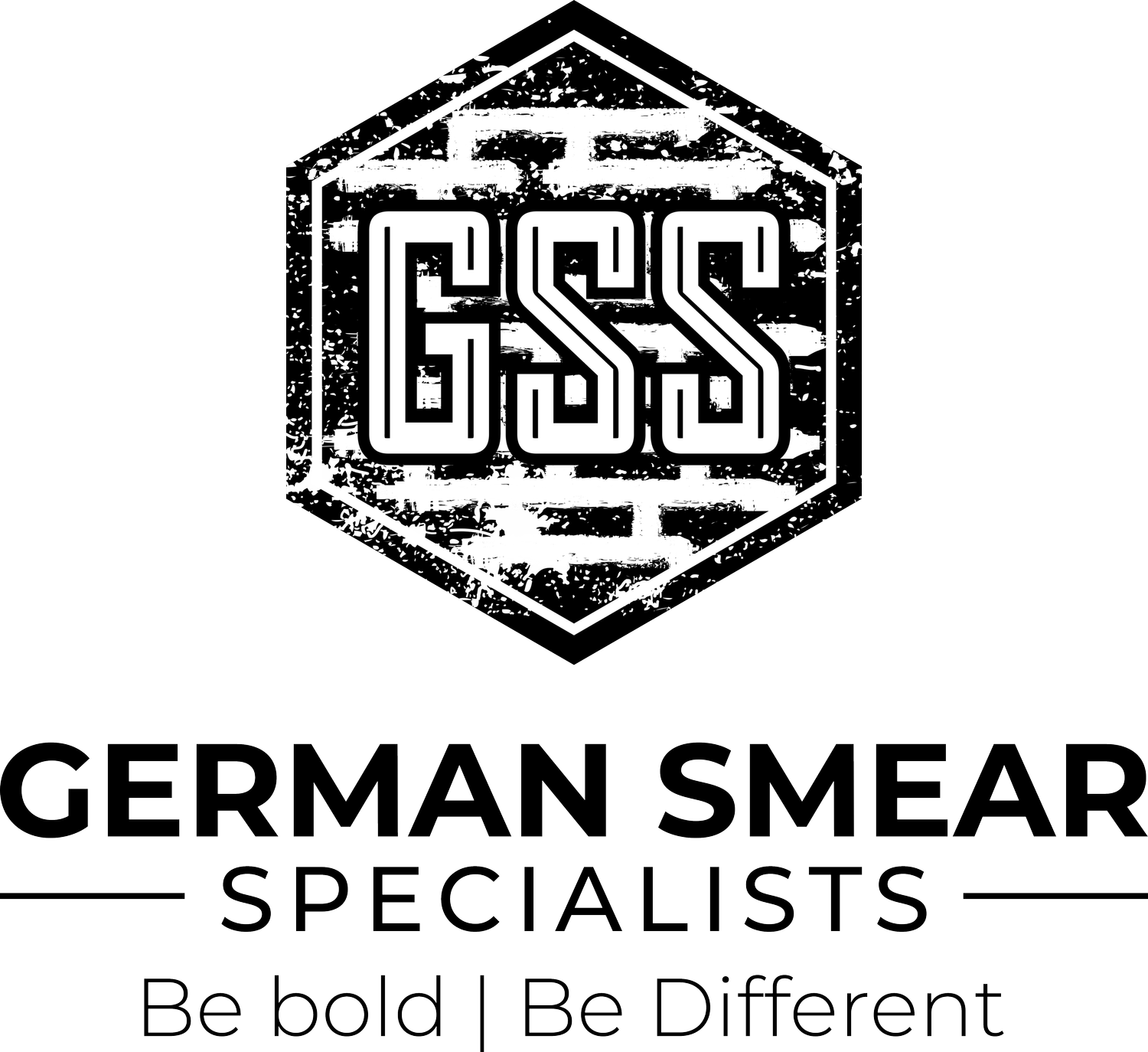German Smear vs Tuckpointing: A Smart Solution for Aging and Damaged Brick
Introduction
Many brick homes begin to show signs of wear over time—from faded facades to cracking mortar joints. Two of the most common methods used to address these issues are German Smear and tuckpointing (also known as repointing). While each serves a different purpose, they can sometimes overlap when homes require both a visual update and structural reinforcement.
This blog breaks down the difference between German Smear and tuckpointing, compares costs, and explains why German Smear can be a transformative solution—especially when combined with strategic repairs for homes suffering from joint failure or advanced brick deterioration.
What Is German Smear?
German Smear is a decorative brick-finishing technique where a mortar mixture is spread across the surface of the brick. Some of the brick remains exposed, resulting in an aged, old-world look. It’s popular in rustic and farmhouse designs and has gained popularity for its ability to mask imperfections and revitalize exterior and interior brick walls.
German Smear is not a structural repair, but it offers superficial reinforcement and visual transformation, which is often enough for homes with mild to moderate wear. It’s also long-lasting, breathable, and highly customizable.
What Is Tuckpointing / Repointing?
Tuckpointing (also called repointing) is the process of repairing deteriorated or missing mortar joints between bricks. Over time, exposure to moisture, temperature shifts, and aging can cause mortar to crumble and separate from the brick, leading to instability.
Tuckpointing involves removing the damaged mortar and replacing it with fresh mortar that blends with the original masonry. This process helps restore the structural integrity of brickwork and prevents water infiltration, which is critical to long-term durability.
Cost Comparison: German Smear vs Tuckpointing
German Smear: $5 to $12 per square foot depending on wall size, labor rates, and customization (e.g., color tinting).
Tuckpointing: $5 to $25 per square foot depending on severity of mortar damage and building height/accessibility.
Combo Jobs: German Smear is an all-in-one process that, when professionally applied by a knowledgeable company, includes tuckpointing as part of the German Smear application. This means deteriorated mortar joints are repaired during the same process, providing both structural stabilization and a refreshed aesthetic in a single step. Which translates to upfront and long-term savings.
Why German Smear Is a Great Alternative
For homes with failing joints or aging brick, German Smear offers several advantages:
Visual Restoration: Disguises patched or uneven joints post-repair
Added Protection: Acts as an extra barrier against moisture
Low-Maintenance: Does not require repainting or sealing
Custom Colors: Can be tinted to match modern or historic styles
When paired with necessary joint repair, it’s an affordable and dramatic transformation that enhances both curb appeal and functional longevity.
Benefits for Historic Homes
Preserving the character of historic homes is key when making updates. German Smear allows homeowners to:
Maintain original brick shape and texture
Blend new repairs with old-world charm
Avoid paint that could trap moisture and damage old bricks
Eliminate the need for reapplication, unlike paint or limewash which require recoats every few years
Additionally, this finish complements architectural styles from early 1900s Craftsman homes to mid-century ranches and colonial revivals. from early 1900s Craftsman homes to mid-century ranches and colonial revivals.
The Importance of Using Lime-Based Mortar
For older brick homes (pre-1940s especially), it’s critical to use hydrated lime-based mortar rather than Portland cement. Portland is too rigid and can crack or crush soft historic brick over time.
Lime mortar is:
More flexible
Breathable
Compatible with older masonry
Whether tuckpointing or applying a German Smear, using the right mortar ensures that the brickwork remains intact and doesn’t suffer future structural damage.
Conclusion
Tuckpointing and German Smear each have their place in brick restoration. When used together—repairing failing joints and finishing with a German Smear coating—they provide both strength and beauty.
If your home has crumbling mortar, stained brick, or just needs a refreshed appearance, German Smear Specialists can help you design a cost-effective plan that preserves your home’s heritage and elevates its appearance.
Contact us today for a free consultation and discover how timeless your brick can look and feel.

